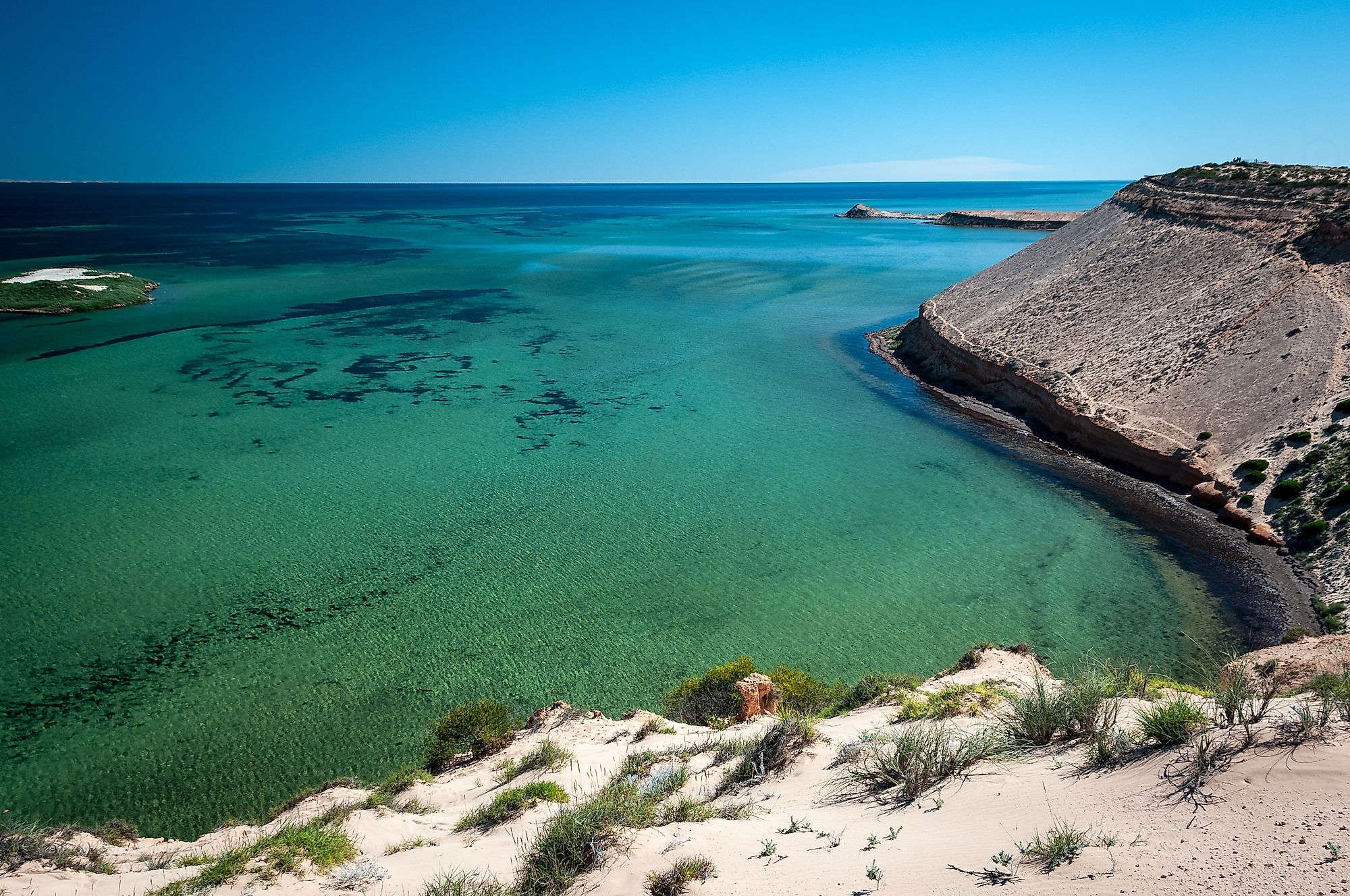
Shark Bay, Australia
Shark Bay is located in the Gascoyne region of Western Australia. A designated UNESCO World Heritage Site, the bay is a 23,000-square-kilometre area of shoreline which includes sand beaches, limestone cliffs, and marine areas along Australia's Western coast. As a whole the bay contains impressive natural and marine landscapes, as well as several endangered species.
The name Shark Bay was given to the area by an English explorer by the name of William Dampier and it is thought that he may have mistaken dolphins in the bay for sharks, as dolphins are much more common in these waters.
World Heritage Site And Protected Areas In Shark Bay
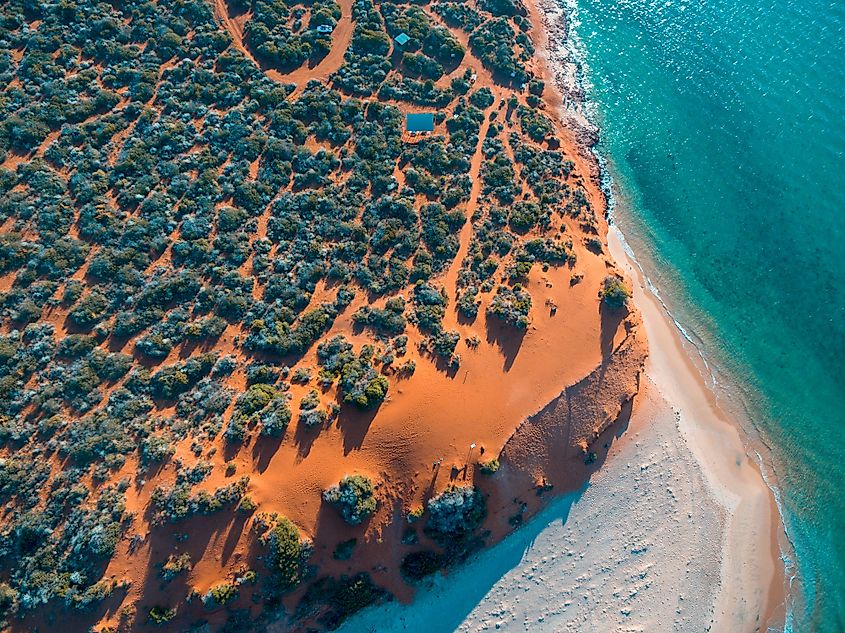
There are a few reasons that Shark Bay has been awarded the UNESCO World Heritage status. Mainly, the site has three “exceptional natural features” including the largest and richest display of natural sea-grass beds, is home to ancient stromatolite colonies, and has a large population of dugong (or manatees) which live in the bay and feed on the sea grass. Additionally, Shark Bay also provides refuge for other endangered species, which only helps to strengthen its importance as a protected area.
Salinity
Shark bay has an average depth of only nine metres and is segregated into sections by various sand banks, islands and peninsulas. These various banks and sills, in combination with the high evaporation rate which is common in hot arid climates, has resulted in a high salinity in the bay. The salinity, though high, does vary throughout the bay, and this gradient has resulted in three biotic zones, each with their own biotic life. These zones are oceanic, metahaline and hypersaline. In areas of the highest salinity, Shark Bay is almost two times more salty than normal ocean water. Hypersaline conditions also have many beach areas which are entirely made up of shells. The less saline areas are where more of the marine life can be found as these waters resemble more normal aquatic conditions.
Stromatolites In Shark Bay
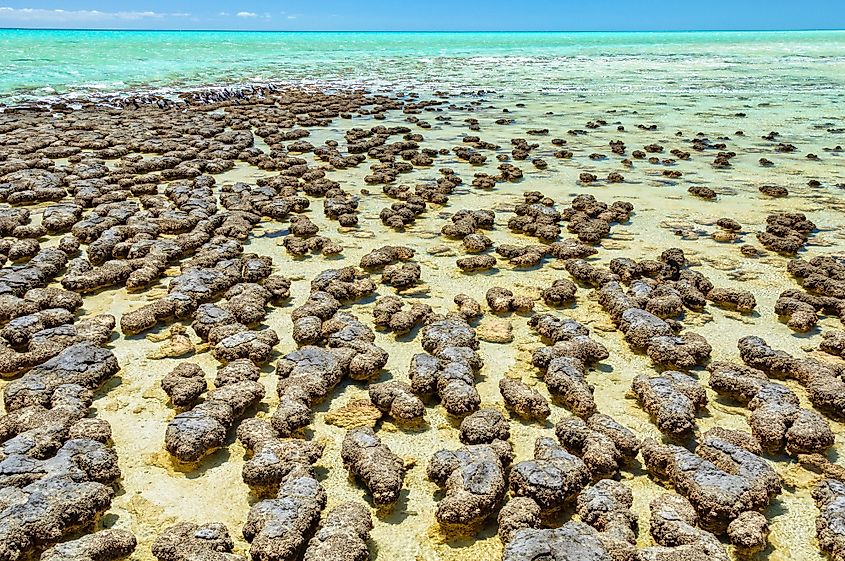
Shark Bay is protected in large part due to the presence of stromatolites, which are algae like microorganisms that produce layered sedimentary deposits which appear as rock-like formations. These tiny little dome shaped rock formations can be seen dotted around Hamelin Pool in the Southern portion of the bay. This grouping of stromatolites is important as it holds the most diverse and largest population of living stromatolites in the world, and these algae organisms themselves are thought to be some of the oldest of Earth’s life forms.
Marine Life Of Shark Bay
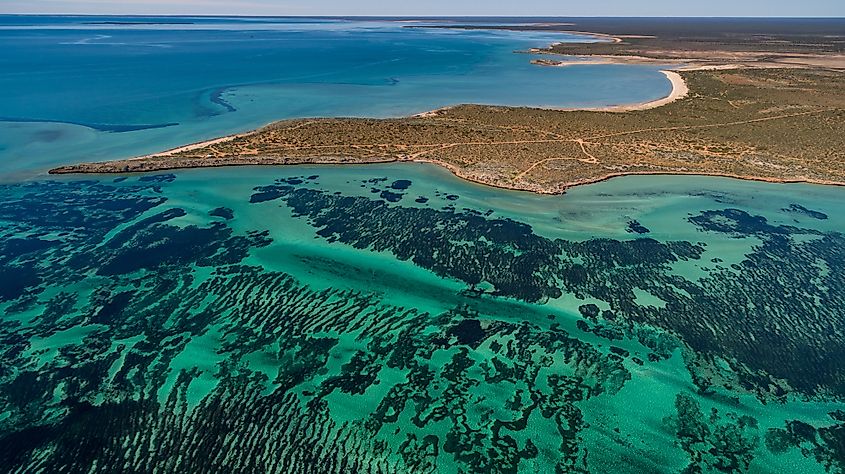
The salinity and unique conditions in the bay are what allow certain plants, such as the famous sea-grass meadows to grow and prosper here. Seagrass covers almost 4,000 square kilometers of the bay, and the Wooramel Seagrass Bank is the largest seagrass bank in the world. The seagrass population is another one of the major reasons Shark Bay is protected as a World Heritage Site. The meadow is actually made up of over twelve different species of seagrass as well, with as many as nine occurring in the same place - the most types of seagrass found in one given area. Seagrasses are vital to the ecosystem of the bay, and provide both food and shelter to many marine animals in the region.
There are thought to be roughly 820 other plant species in the bay and surrounding area, 53 of which are endemic to the bay. They include plants such as Acacia, samphire, sandalwood, tree heath and spinifex scrublands; as well as limestone wattle and umbrella bush in the cliff areas.
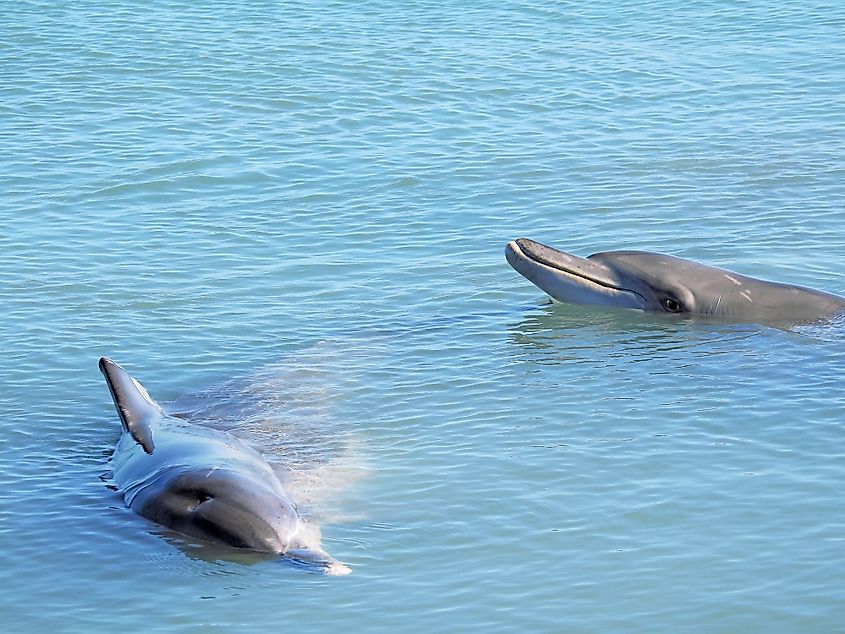
Despite its name, the animal most associated with Shark Bay is the dugong. Around 10,000 dugong - a manatee cousin - live in the bay. This population is roughly 12.5% of all dugongs in the world, making Shark Bay an extremely important habitat. Additionally, there is a large population of bottlenose dolphins in the bay. It is these creatures which historians speculate sparked the name ‘Shark Bay” by mistake.
An additional 26 threatened Australian mammals call this region home, as well as 230 bird species and some 150 reptiles and 323 fish species including some sharks. Migratory whales such as the humpback can also be seen here, as well as Bryde’s whales, and whale sharks. Endangered green sea turtles and loggerhead sea turtles also come to the shallow waters at certain times of the year and nest on the sand beaches of the bay’s shore.
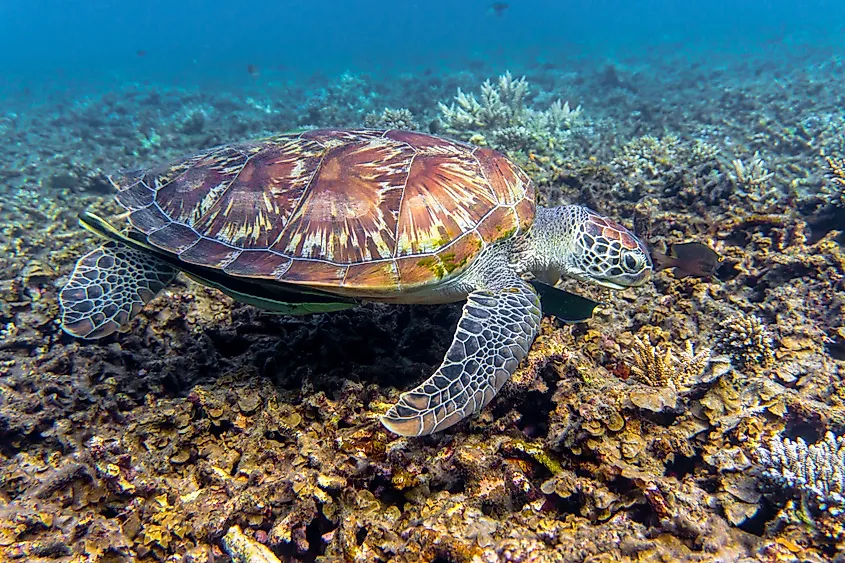
The presence of such unique landscapes, plants, animals and organisms makes Shark Bay a natural area worth protecting and studying. As a result it is home to a variety of national parks, reserves, and world heritage sites such as Francois Peron National Park, Shark bay Marine Park, Bernier Island, Dirk Hartog Island and Faure Island, as well as Hamelin Pool and Monkey Mia to name a few. Together these sites help to preserve and protect this natural beauty.











